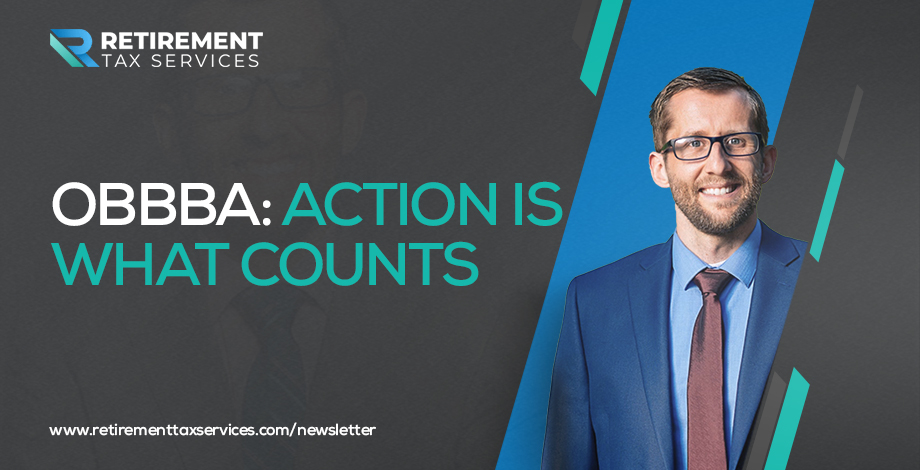
OBBBA: Action is what counts
f you haven’t seen ~700 opinions/articles/posts/summaries or memes about the Big Beautiful Bill by now, count yourself lucky…I’ve definitely seen more than I care to already. While the pontificating is rampant, there seems to be very little accurate and actionable information, so that’s what I’m here to cover today.
To be clear, it is definitely a BIG bill and will require time and patience to fully understand and implement, but that doesn’t mean we have to wait to take action; we just need to be smart about it. The bill is expansive enough that it impacts every single one of your clients. For many clients, that won’t mean they need to change anything for 2025 in their financial or tax plan, but they’ll absolutely have questions, and they’ll absolutely be bombarded with inaccurate and incomplete information, so you’ll want to stay ahead of it.
Let’s start with urgency: thankfully, this bill contains very little that requires anyone to rush out and make a ton of changes right away. The one exception to that is related to energy-efficient tax credits. The last couple of years have seen many opportunities for tax credits related to solar, HVAC, and vehicles, and those are about to all dry up, and Congress didn’t even give us until the end of the year. What that means is that for clients who were already considering energy-efficient improvements, it could make sense to accelerate the timing of that investment.
Just like before the change, the credit in and of itself isn’t worth it if there wasn’t already some intention of going that route. So, if you haven’t already reached out to your clients and let them know that if they’re considering energy-efficient improvements in 2025, it might be worth having a conversation about the timing.
If you work with business owners in capital-intensive industries, it’s definitely worth having a conversation about the expanded bonus depreciation now available. It’s back to 100% in the first year under many circumstances, which again could make plans already in place more lucrative, but does NOT suddenly make those investments free.
The last piece that may need action sooner than later is for clients who are already working on Roth conversion plans for Q3 and Q4, are over the age of 65, and make less than $250,000 before the Roth conversion. That may seem very specific (it is), but it’s important because of the new expanded standard deduction for seniors. Similar to IRMAA, phasing out some of that deduction should NOT be an automatic disqualifier for Roth conversions; it simply needs to be included in the estimated cost. The extension of the TCJA tax rates gives us a longer time period at lower rates that we could potentially stretch out Roth conversions anyway, so it’s worth revisiting the timing and amount of the next Roth conversion before it’s executed.
There will be much more to come on this topic, but in the early going, I wanted to make sure I provided some areas to focus on because a 900+ page bill can feel daunting.
Happy Tax Planning!
P.S. Reminder for Premiere Members: our team is happy to weigh in on these discussions for mutual clients. Reach out to us and let us know where you have questions or are hearing questions from clients, and we’ll gladly give our two cents.
P.P.S. If you don’t have a CPA who can answer these types of questions in days or weeks and not months or years, then it might be time to become an RTS Premiere Member. Check out the member page or reach out to the team to schedule an intro call.